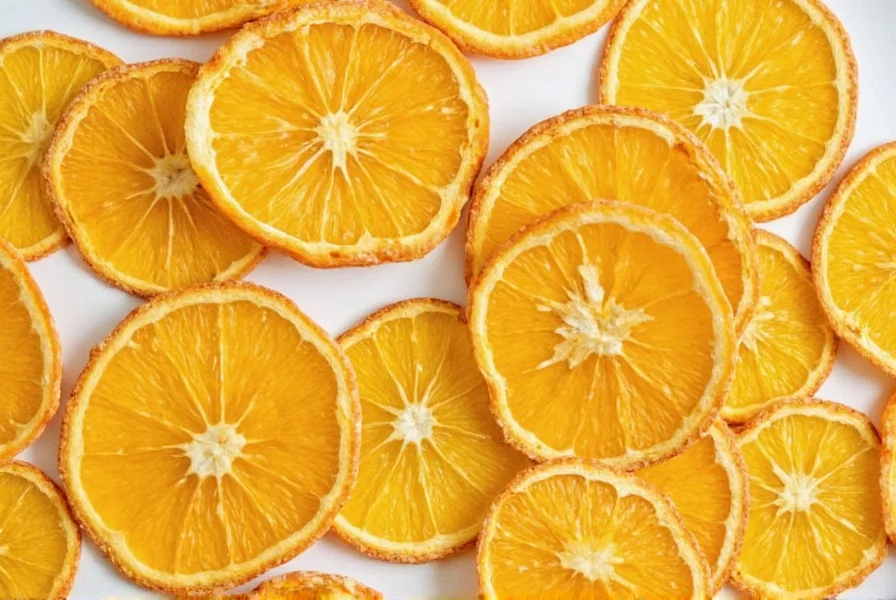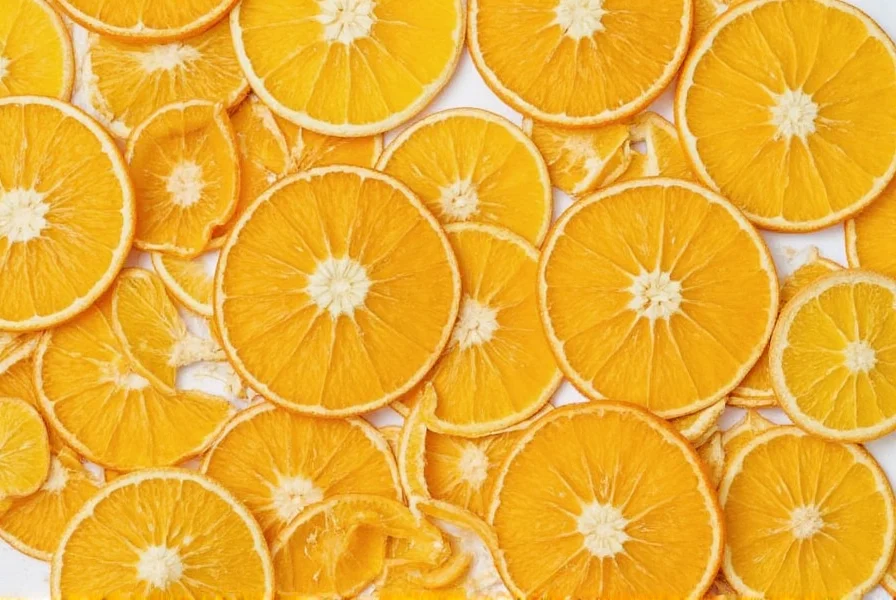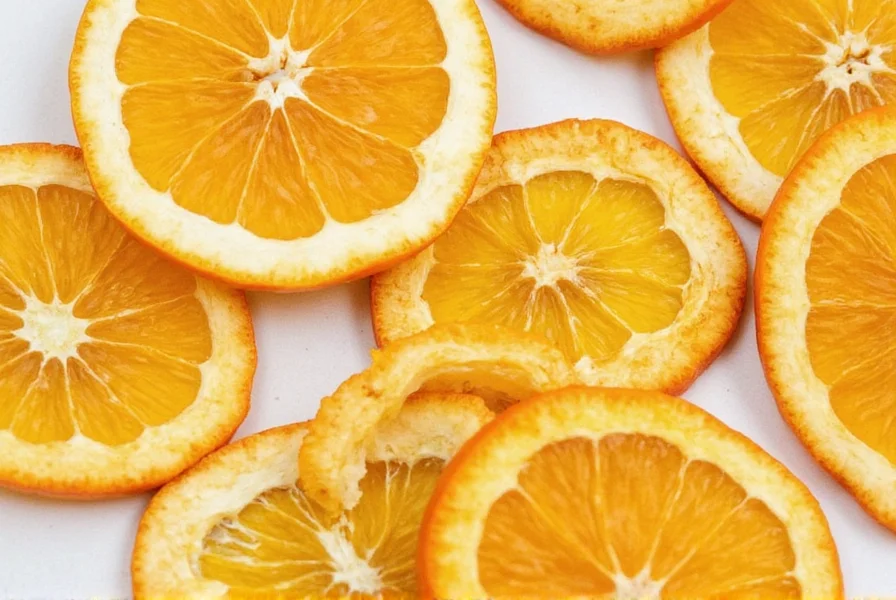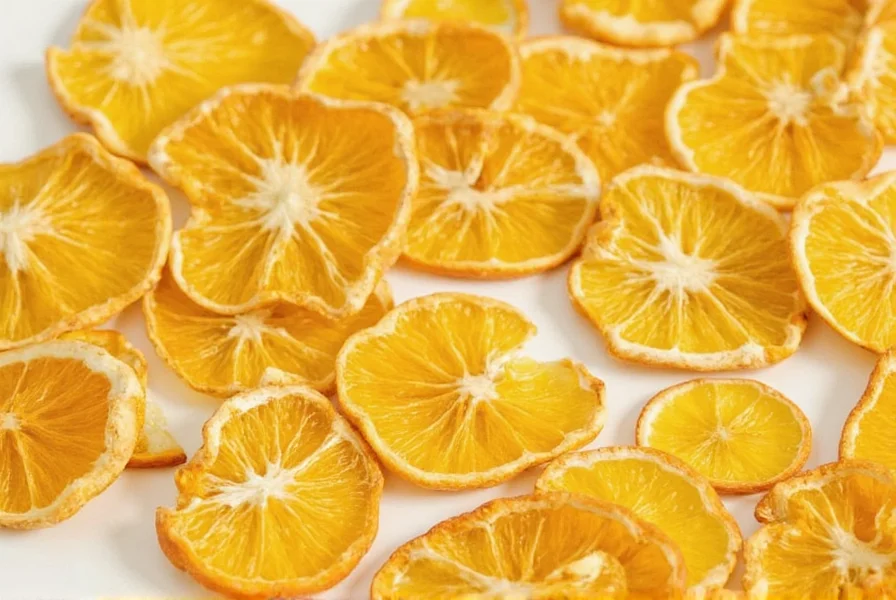Dehydrating orange peels is a quick and easy way to preserve their citrusy flavor and aroma for year-round use. In this guide, we'll walk you through three simple methods to dehydrate orange peels at home: using an oven, a food dehydrator, or air-drying. You'll also learn how to use dried orange peels in cooking, baking, and DIY projects to reduce food waste and enhance your recipes.
Why Dehydrate Orange Peels? Benefits and Uses
Orange peels may seem like waste, but they're actually a powerhouse of natural oils, antioxidants, and aromatic compounds. When you peel an orange, most of the flavor and fragrance is concentrated in the zest — the thin, colored outer layer known as the zest. The white part underneath, called the pith, is bitter and not typically used, but the zest can transform your cooking when dried properly.
Dehydrating orange peels preserves their citrusy aroma and allows you to use them in various ways throughout the year without spoilage. Plus, it's an excellent way to reduce food waste and add more depth to your culinary creations.

How to Dehydrate Orange Peels at Home: 3 Easy Methods
Whether you're using an oven, a dehydrator, or even the sun, drying orange peels is a simple process. Here's how to do it using three popular methods:
1. Oven Method (Quick & Easy)
- Clean organic oranges thoroughly.
- Zest the oranges or cut the peels into strips.
- Place peels on a parchment-lined baking sheet.
- Bake at the lowest temperature setting (usually around 170°F / 80°C).
- Flip every 15–20 minutes until dry and crisp (about 1 hour).
- Cool completely before storing.
2. Food Dehydrator (Hands-Off Approach)
- Cut peels into uniform strips.
- Place them flat on dehydrator trays.
- Set the temperature to 115°F (46°C) and dehydrate for 6–12 hours.
- Check occasionally until peels are brittle.
3. Air-Drying (No Equipment Needed)
- Cut peels into strips.
- Place them on a wire rack in a warm, dry, well-ventilated area.
- Turn daily and allow to dry for 3–7 days.

| Product | Features | Advantages | Best For | Price Range |
|---|---|---|---|---|
| Excalibur 3926TB Dehydrator | Digital control panel, 9 trays, even heat distribution | Precise temperature settings ideal for delicate foods | Serious home chefs and batch processing | $200–$250 |
| Nesco FD-75A Snackmaster Pro | Made-in-USA construction, rear-mounted fan, adjustable thermostat | Affordable yet durable, great for beginners | Families and casual users | $100–$150 |
| OXO Good Grips Citrus Zester | Stainless steel blade, ergonomic handle | Effortless zesting without removing too much pith | Anyone who loves baking or citrus-infused recipes | $15–$20 |
| KitchenAid Stand Mixer with Fruit Juice Attachment | Can juice citrus directly while collecting zest | Saves time and effort during prep work | Professional kitchens and frequent bakers | $300+ |
| Glass Storage Jars with Lids | Airtight, stackable, clear design | Perfect for organizing and displaying dried ingredients | Home cooks who value aesthetics and function | $10–$25 per set |

Creative Uses for Dried Orange Peels in Cooking and Home Projects
Once your orange peels are dried, the possibilities are nearly endless. Here are seven practical and flavorful ideas to get you started:
1. Make Your Own Citrus Zest Powder
Grind dried orange peels into a fine powder using a spice grinder or mortar and pestle. This zest powder adds an instant burst of citrus to baked goods, marinades, and savory dishes.
2. Infuse Sugar or Salt
Bury dried orange peels in a jar of sugar or salt for a couple of weeks. You'll end up with flavored sweetener or seasoning perfect for cocktails, desserts, or finishing dishes.
3. Add to Herbal Teas
Crush dried orange peels and mix them with loose-leaf teas or herbal blends. The result? A naturally uplifting, aromatic tea with hints of citrus.
4. Bake into Cookies and Cakes
Chopped dried orange peels add texture and a hint of sweetness to cookies, cakes, and breads. Try them in chocolate bark or citrus-spiced loaf cakes.
5. Create Homemade Vanilla Extract
Add a few pieces of dried orange peel to your vanilla bean alcohol mixture to enhance the extract with a subtle citrus note.
6. Natural Air Freshener
Place dried orange peels in sachets or simmer them in water with cinnamon sticks and cloves for a natural, chemical-free room freshener.
7. Seasoning for Spice Blends
Incorporate orange zest powder into spice rubs for poultry or pork. It pairs beautifully with smoked paprika, cumin, and black pepper.

Storage Tips for Maximum Shelf Life of Dried Orange Peels
Proper storage ensures your dried orange peels stay fresh and fragrant for months — even years. Here's how to keep them in tip-top condition:
- Use Airtight Containers: Store dried peels in glass jars or plastic containers with tight-sealing lids to prevent moisture absorption.
- Keep in a Cool, Dark Place: Exposure to light and heat can degrade flavor and color over time. A pantry or cupboard works best.
- Label and Date: Mark each container with the contents and date to keep track of freshness.
- Avoid Humidity: If you live in a humid climate, consider adding silica gel packets inside the containers to absorb excess moisture.
- Rehydrate if Needed: For recipes requiring soft texture, simply soak dried peels in hot water for 10–15 minutes before use.

Frequently Asked Questions About Dehydrating Orange Peels
How long do dried orange peels last?
Properly stored dried orange peels can last 6-12 months while maintaining optimal flavor and fragrance. When stored in airtight containers in a cool, dark place, they may remain usable for up to 2 years, though the intensity of flavor will gradually diminish over time.
Can I use non-organic oranges for dehydrating?
While you can use non-organic oranges, we strongly recommend using organic oranges when possible. Conventional oranges are often treated with waxes and pesticides that concentrate in the peel. If using non-organic, wash thoroughly with a fruit/vegetable cleaner and consider removing more of the outer layer to avoid potential chemical residues.
How do I know when orange peels are fully dehydrated?
Fully dehydrated orange peels should be brittle and snap easily when bent. They should feel completely dry to the touch with no moisture remaining. If they bend without breaking or feel leathery, they need more drying time. Properly dried peels will have darkened in color from bright orange to a deeper, more muted orange or even slightly browned.
Can I dehydrate other citrus peels using the same methods?
Yes, the same dehydration methods work well for lemon, lime, and grapefruit peels. However, note that thicker peels like grapefruit may require slightly longer drying times. Each citrus variety has its own unique flavor profile when dried, so experiment to find your favorites for different applications.
Are dried orange peels safe to eat?
Yes, dried orange peels are safe to eat when properly prepared from fresh, clean oranges. The dehydration process concentrates the natural compounds but doesn't introduce any harmful elements. However, if mold develops during drying (which is rare with proper technique), discard those peels immediately as mold can produce harmful mycotoxins.
Why do my dried orange peels taste bitter?
Bitterness typically comes from including too much of the white pith when preparing your peels. The pith is naturally bitter, so when dehydrating, focus on using primarily the colored zest layer. If your dried peels taste excessively bitter, you may have included too much pith or possibly used non-organic oranges with chemical residues.
Can I rehydrate dried orange peels for recipes?
Yes, you can rehydrate dried orange peels by soaking them in warm water, juice, or even alcohol for 10-30 minutes depending on the recipe requirements. This works well for baking applications where you want softer peel pieces. The rehydration time will vary based on how thoroughly the peels were dried and how chewy you want the final texture.
What's the best orange variety for dehydrating?
Navel oranges are generally preferred for dehydrating due to their thick, easy-to-remove peels and sweet flavor. However, Valencia oranges work well too and have a slightly different flavor profile. For more intense citrus flavor, consider using blood oranges or cara cara oranges, which have unique flavor compounds that concentrate beautifully when dried.
Conclusion
Dehydrating orange peels isn't just about reducing waste — it's about unlocking a world of flavor, creativity, and convenience in your kitchen. From making zest powder to crafting homemade extracts and air fresheners, dried orange peels offer versatility and utility that go far beyond the fruit bowl.
Whether you're a professional chef looking to add layers of complexity to your dishes or a curious home cook experimenting with new flavors, learning how to properly dehydrate and store orange peels can become a rewarding addition to your spice and ingredient arsenal.
So next time you grab an orange, remember — the real treasure might just be hiding in the peel!












 浙公网安备
33010002000092号
浙公网安备
33010002000092号 浙B2-20120091-4
浙B2-20120091-4